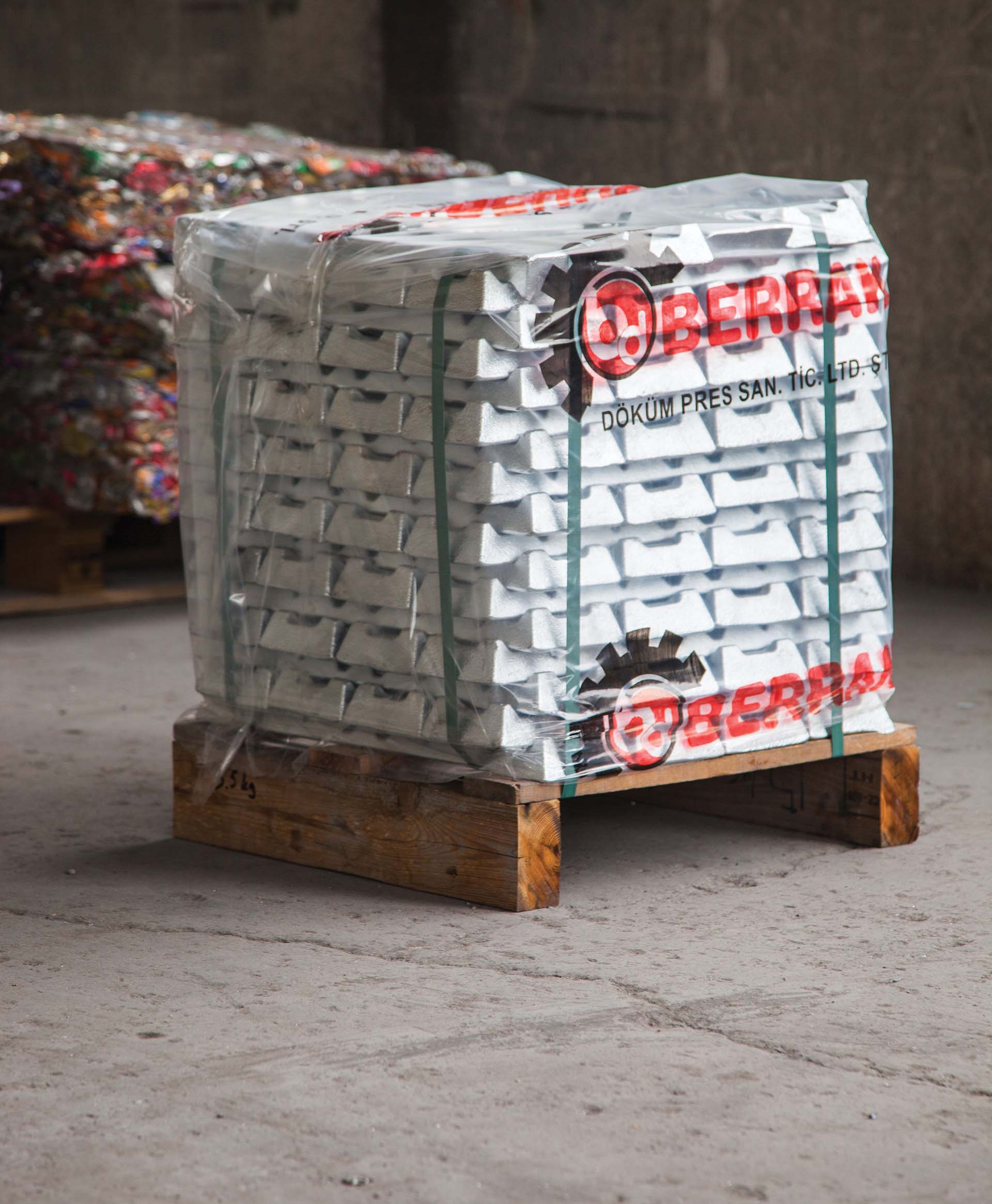- info@berrakdokum.com.tr
- +90 232 437 01 38
- Egemenlik Mah. 106/4 Sk. No:38 Işıkkent-İZMİR
Zamak Ingot

Zamak Alloy
- Zamak is a kind of alloy based on zinc element, which is usually used in parts under pressure. The main elements of Zamak alloy are zinc, aluminum, copper, magnesium. Of course, iron, cadmium, tin, nickel, chromium and manganese are also used in small amounts. But the main base of this alloy is zinc. To prepare the alloy, aluminum is first melted, then pieces of pure copper are thrown into the melt and the temperature is raised until the copper dissolves inside the aluminum and the rest is applied.
- Zamak alloys are a member of the zinc-aluminum alloy family. This alloy was first introduced to the field of metallurgical science in 1929 by the New Jersey Zinc Company. Zamak has different grades, of which Zamak 2, Zamak 3, Zamak 5 and Zamak 7 are the most industrially used. Zamak is the abbreviation of the main elements of this alloy in German.
- The Zinc element has a white color with blue or silver luster. The same color and appearance can be seen in Zamak alloy to some extent. Due to its low melting point and good fluidity, this alloy is a suitable alloy for casting. The melting temperature of Zamak is about 450 degrees Celsius and it can be produced in electric arc and flame furnaces.
- The mechanical properties of Zamak alloy are very suitable and the hardness of this alloy is higher than some brass alloys. Also, the toughness of this alloy is really impressive! So that the samples under tensile test show high strength.
- Zamak can resist oxidation up to 200 degrees Celsius.
Application of Zamak
- As mentioned, Zamak alloy is often used in parts that are subjected to pressure. Parts such as door and window components or car handles. To better understand the use of this alloy, consider the Espagnolette piece.
- Espagnolette is a type of hardware that usually locks the door or window sash to the frame with several small tabs along the length of the profile in double-glazed windows, and by engaging with Zamak, the door or window sash firmly sticks to the frame. Espagnolette is available in different sizes for doors or double-glazed windows and is operated by a normal handle or door lock. Espagnolette tools and fittings are used in the production of double-glazed and aluminum windows.
- Zamak also plays an important role in the regulation of double-glazed doors and windows. The manufactured parts must be properly adjusted so that the adjustment of the double-glazed window and door does not face problems. In addition, the Zamak in the double-glazed door and window can be repaired and replaced, and there is no limit in this regard.
- In addition to these types of applications, due to the beautiful appearance of this alloy, it is also used in making decorative pieces such as toys and some ornaments and rhinestones. Also, this alloy is used in mechanical and electrical industries and automobile manufacturing as corrosion-resistant (galvanized) coatings.
- The hardness of Zamak is 85 Brinell, and in permanent molds it reaches 120 Brinell, which is close to construction steel. The oxidation resistance of Zamak is good up to 200 degrees Celsius.
- One of the points of interest in Zamak is that the higher the amount of zinc, the higher its resistance and the less brittle it is. Actually, 90% of this functional part is composed of zinc metal. Aluminum is used in this alloy to increase the tensile strength and also to provide impact resistance
- In case of damage to this part, as well as displacement due to human factors, you have two options: either you have to replace it, which requires technical knowledge, or you use special tools for displacement. In both cases, it is necessary for the UPVC door and window repairer to be present at the site.
- Zamak is considered an insignificant part visually, but in the technical aspect, it is one of the most important parts of the fittings installed on UPVC and aluminum double-glazed windows.

